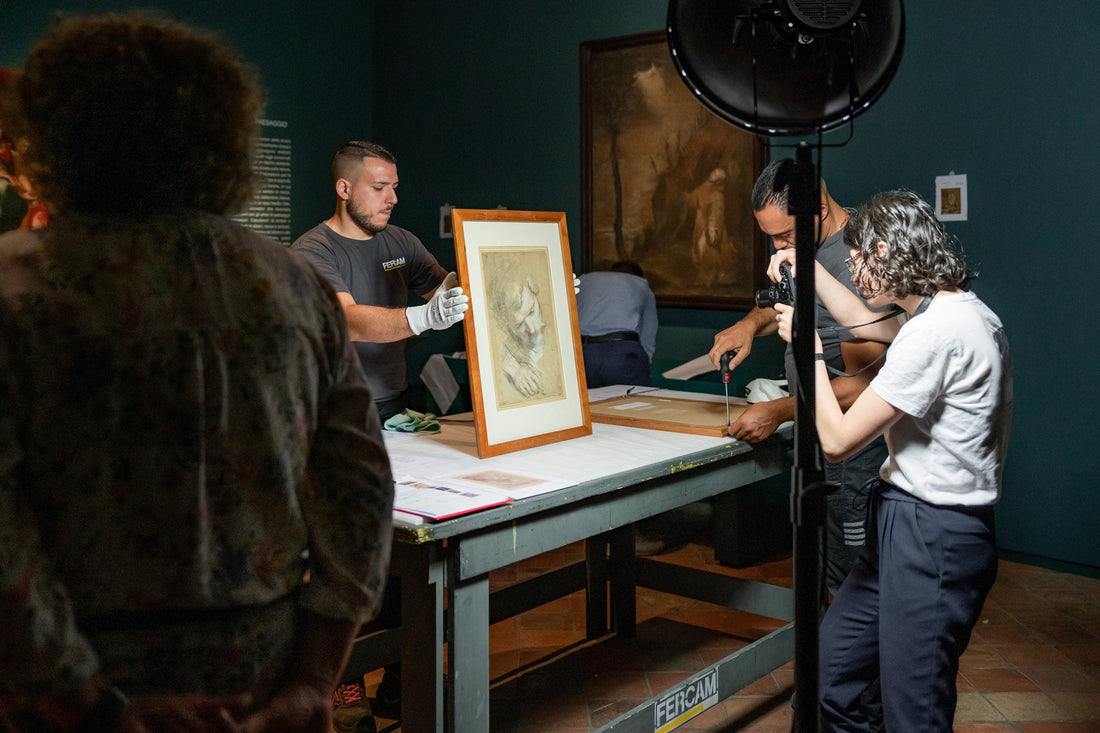
The importance of accuracy
Maximum lighting for art, Museums and photo repro

Light is a fundamental element for art and photography. Artists, collectors and experts have always known the importance of light for the best rendering of their work to the viewer. Whether artworks are being viewed or reproduced, high colour rendition is crucial for correctly assessing the colours of materials and works.
The use of light with a wide color spectrum is vital for achieving accurate, vibrant, and detailed representations. Broader wavelengths ensures fidelity, enhances shadow detail, provides stability in lighting conditions, and allows for proper calibration in reproductions, all of which contribute to the critical understanding and appreciation of the original piece.
The sun would be perfect but…
Sunlight is a broad-spectrum light source that includes infrared, visible, and ultraviolet wavelengths. Evaluating its characteristics enables artists and photographers to make the most of the light’s qualities to achieve optimal results in color reproduction and representation of form and texture. Natural sunlight has a continuous spectrum that includes all visible wavelengths, which is crucial for perceiving complex colors. The CRI of sunlight is exceptionally close to 100, meaning it reproduces colors very faithfully. But direct sunlight exposes artwork to ultraviolet (UV) radiation, which can cause pigments to break down and fade. Many dyes and pigments are sensitive to UV light, leading to alterations in color vibrancy and saturation.
What about artificial light?
Most of artificial light sources do not cover the full spectrum of light that natural sunlight provides. Artificial lights often lack significant output in certain parts of the spectrum, which can lead to less accurate color rendering, resulting in lower CRI values compared to sunlight. While sunlight has a CRI of 100, most artificial sources CRIs are below 97, leading to inaccuracies in color reproduction. This can affect how colors appear, making them appear dull or incorrect compared to how they would look in natural light.
An artificial, sun-like color spectrum, without harmful UVs
This is where Maxima comes in: an artificial LED fixture that precisely mimics natural light without the harmful UV exposure. How close is it to sunlight? A lot. Maxima 3 is currently the lighting instrument with the highest Color Rating Index (98.6 CRI) and an extremely accurate white point calibrated to 5600K°.
What does the use of Maxima lights with ultra high CRI translate into when applied to photography and the observation of artworks?
Color rendition of a typical LED for photo/video

Color rendition of Maxima

Color spectrum of a generic LED for photography

Color spectrum of Maxima

Full Color Reproduction
A broad-spectrum light source illuminates subjects in a manner that enables all colors to be visible without loss of saturation. For instance, pigments or materials that have complex color formulations may not reflect certain wavelengths well if illuminated by narrow-spectrum light. This is particularly crucial in art where subtle color variations contribute to the overall effect.
Shadow Definition
The Wide-spectrum of MAXIMA improve the clarity of shadows, as they produce more distinguishable transitions and details between light and dark areas. This is vital for artists and photographers who want to capture or emphasize texture and depth within the artwork or photographic subjects. Shadows illuminated with broad-spectrum light reveal more gradation and detail, enhancing the visual perception of dimensionality.
Controlled Temperature and Humidity Effects
Natural light can change in temperature due to time of day or weather conditions. Artificial lights with a broad spectrum provide reliable consistency, reducing variability when capturing colors accurately over time. This can be particularly significant when working with materials that may be sensitive to temperature fluctuations. Artists and conservators depend on stable lighting to maintain the integrity of the artwork during reproduction processes.
Mitigation of Optical Effects
The broad-spectrum of MAXIMA minimizes chromatic aberrations and other optical phenomena that can occur with narrow-band sources. This means that when colors are reproduced digitally, for instance, there is less risk of color fringing or halo effects, resulting in cleaner, more defined edges in the final output.
Color Calibration
The use of wide-spectrum MAXIMA light helps calibration processes in photography and printing. For photography, accurate color balance ensures that the final image matches the actual subjects’ colors. This is also critical in printing, where the color reproduction on different media must match the original artwork.







